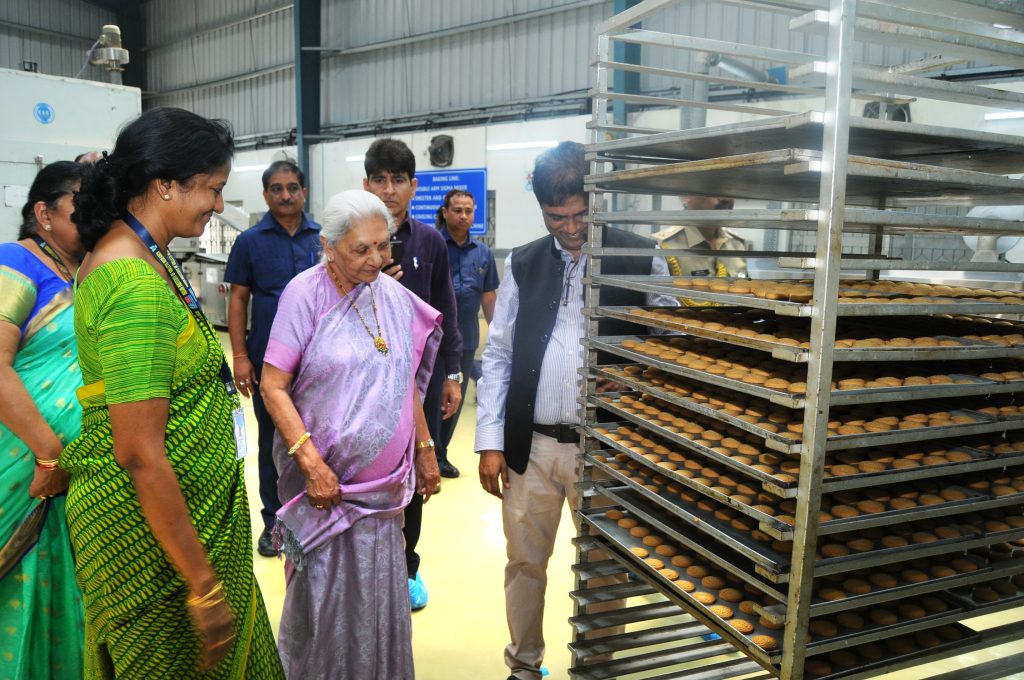Farmer earning 1/3rd of non-farm worker’s income stays major cause of rural distress

Photo credit ICAR (UP Governor Anandiben Patel during her visit to ICAR unit in Hyderabad)
By Pradeep Kumar Panda
Bhubaneswar, April 15: Among all sectors, agriculture offers the best hope for green growth that is environmentally sustainable. Till recently, increase in agri-food production remained primary focus of agricultural policy and strategy. This strategy did not specifically target improvement in farmers’ income and supply of food to consumers at competitive price which are important for welfare of farmers and consumers respectively.
The transformation of some sectors of Indian economy following economic reforms in early 1990s lifted growth rate of total economy from 4.2 per cent during 1971 to 1991 to close to seven per cent after 1991. This helped in doubling per capita income in the country at constant prices (2004-05) in just 17 years as compared to 37 years before 1991.
However, agriculture sector, which comprised over 40 per cent of Indian economy and 59 per cent workforce in year 1991, did not experience any permanent change in its growth trajectory. GDP of agriculture and allied sectors doubled in about 23 years before 1991 and it took same number of years to double again. Even in recent years agriculture growth remain stuck around long run average of 2.9 per cent, whereas non agriculture growth hovers around 8 per cent.
The higher growth rate in non-agriculture sector has been accompanied only by a small shift of farmers to non-farm occupations. Consequently, the income of cultivators (farmers) has remained relatively lower and the gap with non-farm workers has enlarged. A cultivator (farmer) earns less than one third of the income of a non-farm worker. This is major cause of rural distress.
Special focus is needed to raise income of farmers at faster rate. This requires transformation of agriculture production, as well as marketing through a multi-pronged strategy that involves increase in productivity, reduction in average cost, better price realization for farm produce, expansion of allied activities and shift of farmers to non-farm occupations.
In the post economic reforms period, agriculture sector could not keep pace with the growth of other sectors of Indian economy despite potential for higher growth. This period also experienced fast shift towards globalization and commercialization of agriculture – increase in trade intensity, higher use of commercial inputs, rise in area under cash crops and market oriented production.
These changes required evolution of agricultural markets, new institutional mechanisms and liberalisation of agriculture sector. However, the policy interventions in agriculture continues to follow the “Business as Usual” approach devoid of any significant change in regulation and innovative ways of supporting the sector. The most serious problem is faced in agricultural market and prices.
Failure of markets to provide remunerative prices to producers is reflected in rising demand for payment of MSP for more and more products and higher MSP. While producers complain of low farm harvest prices consumers complain of high retail prices and both groups suffer from large price spread between farm and fork. Power of prices in raising farmers’ income and production is generally underestimated.
A 10 per cent increase in output prices realised by farmers directly raise their income by 16 per cent besides large favourable effect on production. Prices at farm level can be raised in two ways. First, by ensuring MSP and second by creating competitive market.
In many states farmers get 10-20 per cent lower price than MSP even for paddy and wheat where large part of marketed surplus is procured by government. Ensuring MSP in such cases will raise farmers’ income by 16-32 per cent. It is important to mention that green revolution happened in those states only where farmers got remunerative prices. The same is being experienced now in Central and Eastern India.
Farmers group often demand raise in MSP and coverage of more agricultural commodities under MSP regime. In this context, it is important to emphasise that paying prices higher than open market price through the mechanism of procurement causes many distortions. There is a need to think of alternative mechanisms like “Deficiency Price Payment” which are less costly, more equitable, and non-distortionary.
The second and more subtle mean of ensuring better prices to farmers, without causing pressure on consumer prices, is through reforms in the system of marketing. This system and its infrastructure are outdated and exploitative. Rather than evolving, agricultural markets have decayed and serving the interest of intermediaries rather than farmers and consumers.





